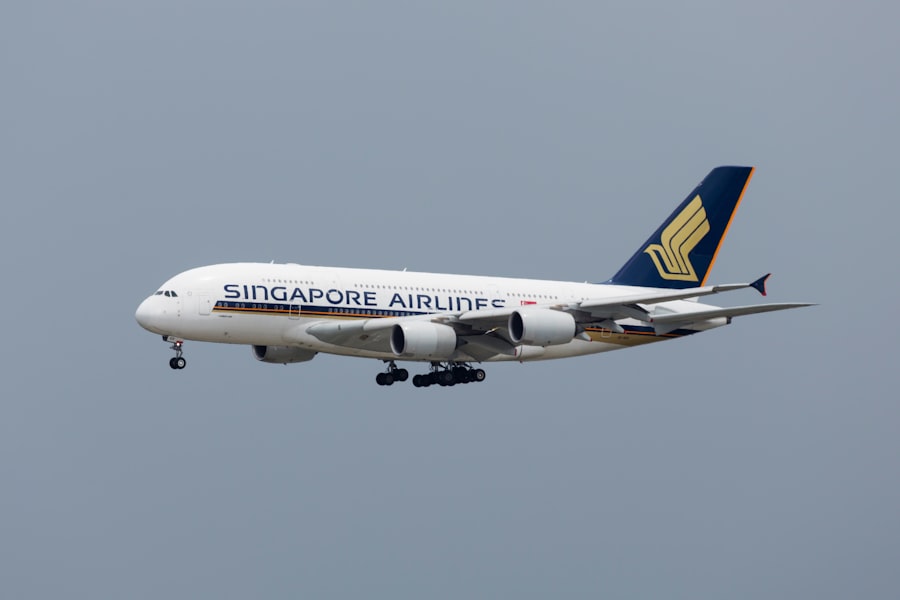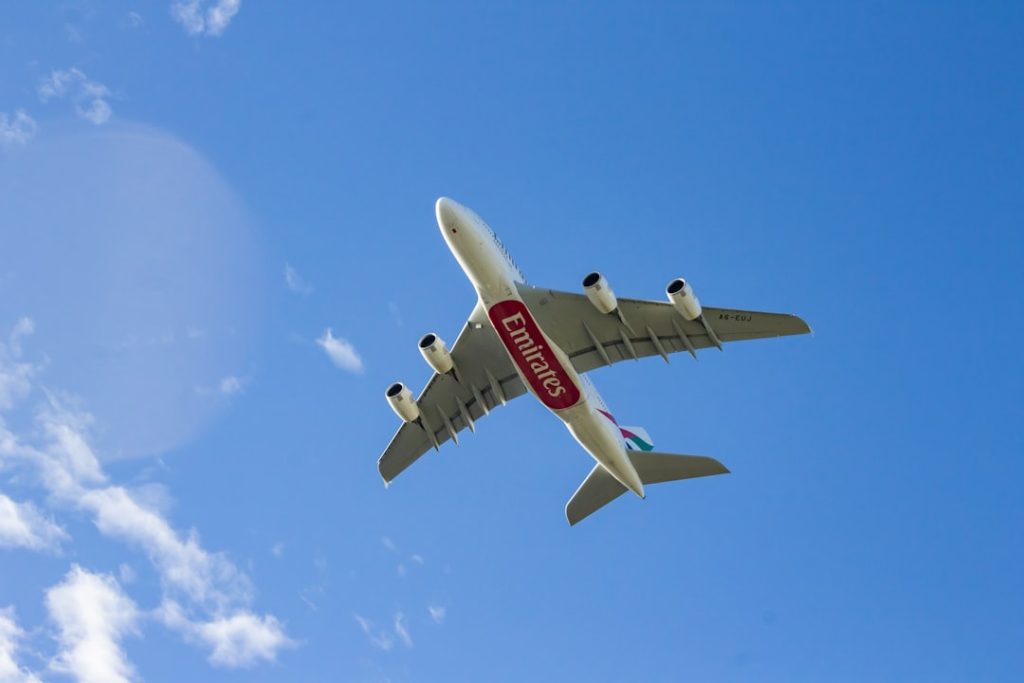The Airbus A380, a marvel of modern engineering, stands as a testament to the capabilities of contemporary aviation technology. First introduced in 2005, this double-deck, wide-body, four-engine aircraft has redefined long-haul travel by offering unprecedented passenger capacity and comfort. With its first commercial flight taking place in October 2007, the A380 quickly garnered attention for its size and innovative design, becoming a symbol of luxury in air travel.
Airlines around the globe embraced the A380 for its ability to transport large numbers of passengers over long distances, making it a popular choice for high-demand routes. The A380 was developed in response to the growing need for larger aircraft capable of accommodating increasing passenger volumes in an era of globalization. As air travel became more accessible, airlines sought solutions to manage congestion at major airports while maximizing profitability.
The A380’s introduction marked a significant shift in the aviation landscape, as it allowed airlines to operate fewer flights while still meeting the demands of a burgeoning market. With its impressive wingspan and distinctive silhouette, the A380 has become an iconic presence in the skies, representing not just a mode of transportation but also a commitment to innovation and excellence in aviation.
Key Takeaways
- The A380 aircraft is a double-deck, wide-body, four-engine jet airliner developed by Airbus.
- The design and features of the A380 aircraft include a spacious cabin, advanced aerodynamics, and a high level of comfort for passengers.
- The A380 aircraft optimizes passenger capacity and comfort through its two full-length passenger decks and various seating configurations.
- Utilizing cargo space and load capacity, the A380 aircraft can carry a significant amount of freight in addition to passengers.
- The A380 aircraft is known for its fuel efficiency and impressive range, making it a cost-effective and environmentally friendly option for long-haul flights.
Design and Features of the A380 Aircraft
The design of the Airbus A380 is a remarkable feat of engineering that combines aesthetics with functionality. Its distinctive double-deck configuration allows for a spacious cabin layout, providing airlines with flexibility in how they choose to configure their aircraft. The A380 can typically accommodate between 555 and 850 passengers, depending on the airline’s chosen seating arrangement.
This versatility is one of the key features that make the A380 an attractive option for airlines looking to maximize their operational efficiency. Aerodynamically, the A380 is designed with advanced wing technology that enhances lift and reduces drag. The wings are equipped with winglets that improve fuel efficiency by minimizing vortex drag at the tips.
Additionally, the aircraft’s fuselage is constructed using lightweight materials such as aluminum alloys and composite materials, which contribute to its overall efficiency. The cockpit is equipped with state-of-the-art avionics, including fly-by-wire technology that enhances control and safety during flight. The combination of these design elements not only ensures a smooth flying experience but also positions the A380 as one of the most technologically advanced aircraft in operation today.
Optimizing Passenger Capacity and Comfort

One of the standout features of the A380 is its ability to optimize passenger capacity without compromising comfort. Airlines have taken advantage of this capability by designing various cabin layouts that cater to different market segments. For instance, some airlines have opted for a high-density configuration that maximizes seating capacity, while others have chosen a more spacious layout that includes premium cabins such as business and first class.
This flexibility allows airlines to tailor their offerings based on route demand and customer preferences. Passenger comfort is further enhanced by the A380’s spacious cabin design. The aircraft boasts wider aisles and larger windows compared to traditional aircraft, creating an airy atmosphere that reduces feelings of confinement during long flights.
Additionally, many airlines have incorporated advanced in-flight entertainment systems and improved lighting designs that mimic natural daylight, contributing to a more pleasant travel experience. The quiet cabin environment, achieved through advanced soundproofing techniques, allows passengers to relax or sleep more easily during their journey, making long-haul flights more enjoyable.
Utilizing Cargo Space and Load Capacity
| Vehicle Type | Cargo Space (cubic feet) | Load Capacity (pounds) |
|---|---|---|
| Sedan | 12 | 1000 |
| SUV | 30 | 1500 |
| Truck | 50 | 2000 |
In addition to its passenger capabilities, the Airbus A380 is also designed with significant cargo space that can be utilized effectively by airlines. The aircraft features a large cargo hold located beneath the passenger deck, which can accommodate various types of cargo, including luggage, freight, and oversized items. This dual functionality allows airlines to maximize revenue potential by transporting both passengers and cargo on the same flight.
The cargo capacity of the A380 is particularly advantageous for airlines operating on high-demand international routes where both passenger and freight traffic are substantial. The aircraft can carry up to 150 metric tons of cargo, depending on its configuration and operational requirements. This capability not only enhances profitability but also provides airlines with greater flexibility in managing their operations.
For example, during peak travel seasons or special events, airlines can adjust their cargo loads to meet demand without needing additional flights or aircraft.
Fuel Efficiency and Range of the A380 Aircraft
Fuel efficiency is a critical consideration for modern aircraft design, and the Airbus A380 excels in this area thanks to its advanced engineering and aerodynamic features. The aircraft’s four-engine configuration is optimized for fuel consumption, allowing it to achieve impressive range capabilities while minimizing operational costs. The A380 can fly distances of up to 8,000 nautical miles (approximately 15,000 kilometers), making it suitable for long-haul international routes.
The use of modern engines, such as the Engine Alliance GP7200 or Rolls-Royce Trent 900, contributes significantly to the A380’s fuel efficiency. These engines are designed with advanced materials and technologies that enhance performance while reducing emissions. Furthermore, the aircraft’s aerodynamic design minimizes drag during flight, allowing it to operate more efficiently than many smaller aircraft on similar routes.
As airlines face increasing pressure to reduce their carbon footprint and operational costs, the A380’s fuel efficiency positions it as a viable option for sustainable air travel.
Maintenance and Operational Cost Reduction

Maintaining an aircraft as complex as the Airbus A380 requires careful planning and execution to ensure safety and reliability. However, advancements in technology have enabled airlines to reduce maintenance costs associated with operating this large aircraft. The A380 is designed with ease of maintenance in mind; for instance, its modular construction allows for quicker access to critical components during routine inspections and repairs.
Airbus has also implemented predictive maintenance strategies that utilize data analytics to monitor aircraft performance in real-time. By analyzing data collected from various sensors throughout the aircraft, airlines can identify potential issues before they become critical problems. This proactive approach not only enhances safety but also reduces downtime and maintenance costs associated with unscheduled repairs.
As a result, airlines operating the A380 can achieve greater operational efficiency while ensuring compliance with stringent safety regulations.
Implementing Technology for Enhanced Efficiency
The integration of cutting-edge technology into the Airbus A380 has played a pivotal role in enhancing its overall efficiency. From advanced avionics systems that improve navigation and communication capabilities to sophisticated flight management systems that optimize fuel consumption during flight, technology is at the forefront of the A380’s design philosophy. The aircraft’s fly-by-wire control system allows pilots to operate the aircraft with precision while reducing pilot workload.
Moreover, advancements in cabin technology have transformed the passenger experience aboard the A380. In-flight entertainment systems have evolved significantly, offering passengers access to a wide range of movies, music, and connectivity options through Wi-Fi services. These technological enhancements not only improve passenger satisfaction but also contribute to operational efficiency by keeping passengers engaged during long flights.
Additionally, innovations such as LED lighting systems allow airlines to create customized cabin environments that enhance comfort while reducing energy consumption.
Future Developments and Innovations for the A380 Aircraft
As aviation continues to evolve, so too does the potential for future developments and innovations related to the Airbus A380. While production of new A380s has ceased as of 2021 due to changing market demands favoring smaller aircraft, existing models are likely to undergo upgrades and retrofits aimed at enhancing performance and sustainability. Airlines may explore retrofitting their fleets with more efficient engines or incorporating new technologies that further reduce emissions.
Furthermore, advancements in sustainable aviation fuels (SAFs) present an opportunity for the A380 to align with global efforts toward greener air travel. Research into alternative fuels derived from renewable sources could significantly reduce the carbon footprint associated with operating large aircraft like the A380. As regulatory frameworks evolve and consumer preferences shift toward environmentally friendly options, airlines may find innovative ways to adapt their operations while continuing to leverage the unique advantages offered by this iconic aircraft.
In conclusion, while the future of the Airbus A380 may be uncertain in terms of new production lines, its legacy as a pioneering aircraft will undoubtedly influence future designs in commercial aviation. The lessons learned from its development will inform innovations aimed at improving efficiency, sustainability, and passenger experience across all types of aircraft in years to come.


